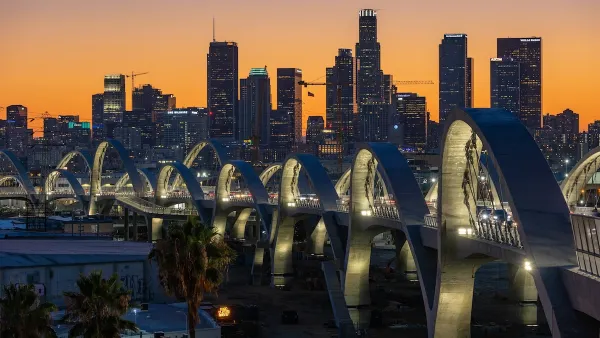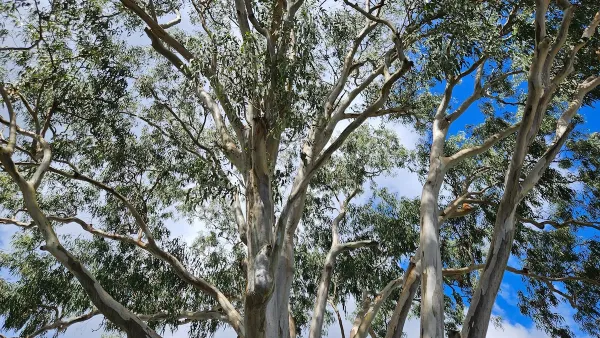This piece from Places discusses Los Angeles as a place difficult to wrap one's head around, and how light and darkness are so important to the city's identity.
This essay is by Los Angeles Times book critic David L. Ulin and is part of a new book featuring photographs of Los Angeles by Michael Light.
"This utilitarian connection to the city is one, I think, that gets to the essence of L.A. It exists at the heart of the dichotomy between private and public architecture, the pre-eminence of infrastructure, the balance between neighborhood and sprawl. Where else would we find freeway overpasses named for fallen heroes, such as the Clarence Wayne Dean Memorial Interchange, where the Antelope Valley Freeway sweeps into Interstate 5, named for the motorcycle policeman who died in that spot when his bike plunged off a piece of collapsed roadway during the Northridge earthquake? On the one hand, such a memorial seems ridiculous, reminiscent of T.S. Eliot's caustic lines: "Here were decent godless people: / Their only monument the asphalt road. / And a thousand lost golf balls." As with most things in Los Angeles, however, the surface masks another kind of depth. A site such as the Clarence Wayne Dean Interchange tells us something - not about our superficiality, but about the nature of how we live here, how we interact with our environment, which makes freeways among the most important monuments we have. It also highlights our complex relationship with the natural landscape, which can rise up at any moment to shake our most substantial structures loose. This is perhaps the least understood aspect of Los Angeles, the way it exists in the shadow of elemental forces, forces we cannot control. We build on terrain that is, in the most fundamental sense, unstable, that shakes and burns and floods with the regularity of the tides. Here again, we see the intercession of technology, and the limits of that technology at once. What does it mean that it all can fall to pieces in an instant, that what we have constructed here, no matter how apparently substantial, is as ephemeral and fleeting as a dream?"
FULL STORY: L.A. Day/L.A. Night

Analysis: Cybertruck Fatality Rate Far Exceeds That of Ford Pinto
The Tesla Cybertruck was recalled seven times last year.

National Parks Layoffs Will Cause Communities to Lose Billions
Thousands of essential park workers were laid off this week, just before the busy spring break season.

Retro-silient?: America’s First “Eco-burb,” The Woodlands Turns 50
A master-planned community north of Houston offers lessons on green infrastructure and resilient design, but falls short of its founder’s lofty affordability and walkability goals.

Test News Post 1
This is a summary

Analysis: Cybertruck Fatality Rate Far Exceeds That of Ford Pinto
The Tesla Cybertruck was recalled seven times last year.

Test News Headline 46
Test for the image on the front page.
Urban Design for Planners 1: Software Tools
This six-course series explores essential urban design concepts using open source software and equips planners with the tools they need to participate fully in the urban design process.
Planning for Universal Design
Learn the tools for implementing Universal Design in planning regulations.
EMC Planning Group, Inc.
Planetizen
Planetizen
Mpact (formerly Rail~Volution)
Great Falls Development Authority, Inc.
HUDs Office of Policy Development and Research
NYU Wagner Graduate School of Public Service



























